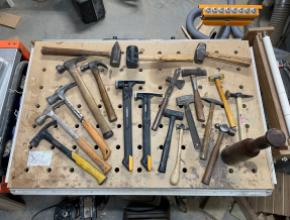Do you work to live or live to work? It’s an important question that has long-term implications for your health, wealth, and well-being.
As a media company focused on business, we talk a lot about things like production efficiency, profitability, and growth. We talk less about the human element of all of those things. But it’s a subject we all ignore at our own peril and likely at the peril of our businesses, as well.
Just about every company I visit and every business leader I talk to shares concerns about not being able to find enough good employees. I often ask in response what they have been doing to attract those employees. Most reply with a list of traditional incentives like higher wages and benefits. Few talk about making their businesses a place in which people want to work.
I’ve been described occasionally as a workaholic. From my first real job at a local newspaper when I was still a teenager, I was always willing — often enthusiastic — to put in long hours to get the job done. Much of my personal identity has been defined by my work. But over the years, some things have moved in to compete for time and mental bandwidth.
Marriage and kids were and remain big factors in my work-life balance equation. I’ve had the luxury for many years of being able to work from home. So, even when I’m putting in long hours at work, I’m still accessible to the family. That was especially valuable when my kids were young. But still today, it plays a role in my marriage and my relationships with my adult children, even with them in their own homes many miles away.
Most people in a production environment can’t work from home. They must interact with co-workers directly to produce products together. How work is constructed, managed, and compensated all play a part in making time at work worth time away from other parts of life.
Frustrations at work quickly erode rewards, tipping the scales of work-life balance. Some things just aren’t worth the compensation. Shigeo Shingo was a founding father of lean manufacturing, and I was privileged to spend a day with him in 1984. One of his more profound statements was, “There are four purposes for improvement: easier, better, faster, cheaper. These four goals appear in order of priority.” Making things easier first improves the work-life balance of employees.
As employers, we are often blind to the life side of our workers’ work-life balance scales. We need to recognize and pay more attention to the fact that work is not necessarily the highest priority of employees. As managers, employers, and owners, we need to pay attention to our own work-life balance as it affects our outlook, focus, and relationships with everyone around us.
I can’t tell anyone what constitutes perfect work-life balance, but I urge everyone to consider it seriously in their own lives, no matter what their role in work is.







Have something to say? Share your thoughts with us in the comments below.